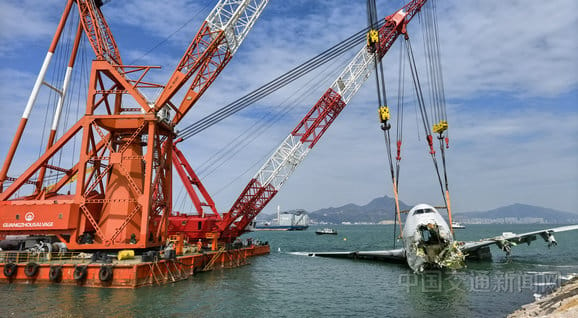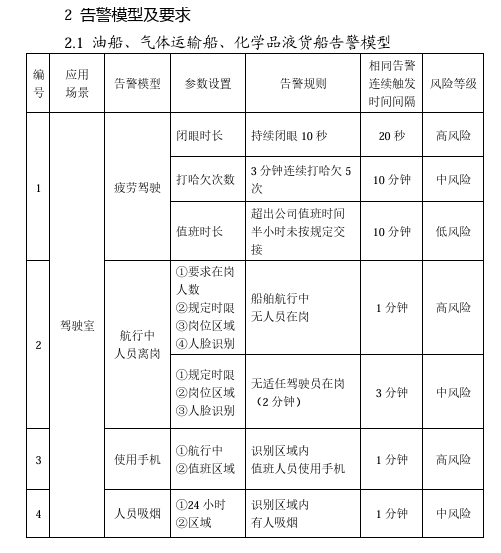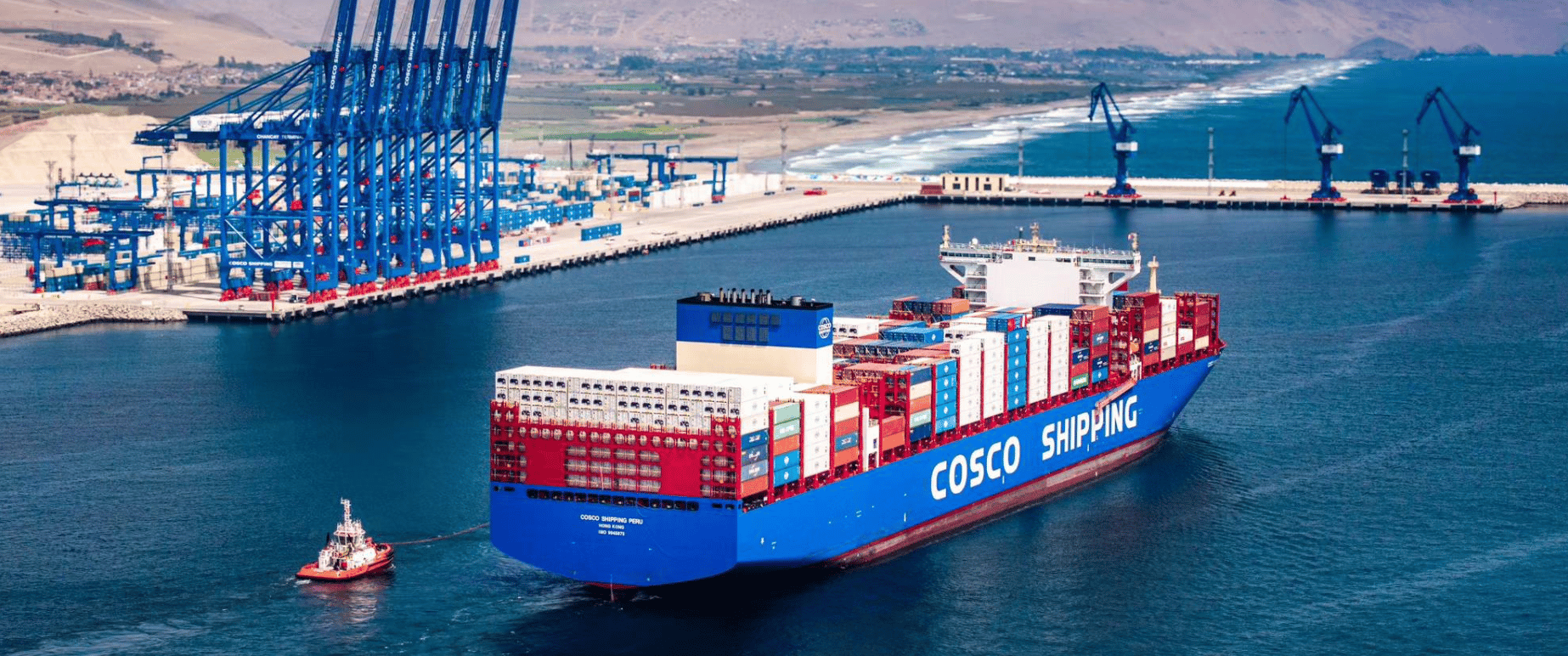Recent News
“Guangzhou Salvage Bureau Efficiently Completes Salvage Mission for Cargo Plane that Crashed into the Sea Off Hong Kong“ [广州打捞局高效完成香港坠海货机打捞任务], China Transportation News Network [中国交通新闻网], 29 October 2025. [Link]
The Guangzhou Salvage Bureau, one of three nationally-operated bureaus under the Ministry of Transport Rescue and Salvage Bureau, used two floating cranes (Nan Tian Xiang / 南天翔 & Nan Tian Peng / 南天鹏), and two tugboats (Sui Jiu Tuo 18 / 穗救拖18 & De Hua / 德华轮), as well as 80 personnel including engineers, divers, and crew to raise the Boeing 747 that crashed into the sea at Hong Kong International Airport on 20 October.

“BYD’s Eight RO-RO Vessels Have Appeared at Xiaomo Port“ [比亚迪8艘滚装船悉数亮相小漠港], China Transportation News Network [中国交通新闻网], 24 October 2025. [Link]
Chinese automobile manufacturer BYD has built a fleet of 8 very large pure car and truck carriers (PCTC) to transport its electric vehicles world wide. The new port of Xiaomo (小漠港) is gradually becoming an key terminal for BYD’s global vehicle exports, supporting the company’s auto plants nearby.

“COSCO Shipping’s Far East to South American West Coast Route Launches Its Maiden Voyage from Yangpu to Chancay Port“ [中远海运远东至南美西航线自洋浦首航钱凯港], China Transportation News [中国交通报], 28 October 2025. [Link]
The COSCO Shipping containership, COSCO Asia, departed on 27 October from the recently expanded Yangpu International Container Port in Hainan Province, beginning a new route between Hainan, South East Asia, the Pacific, and South America. It will run to Chancay Port, a COSCO-developed multi-purpose port in Peru that was completed and opened in November 2024 and has caused concern in the US about PRC geo-economic ambitions in the region.
“Shandong Port Qingdao Port’s Second 400,000-ton Ore Terminal Commences Operations“ [山东港口青岛港第二座40万吨矿石码头投产], Xinhua [新华社], 27 October 2025. [Link]
The Dongjiakou Port Area commenced grab bucket discharge operations for its second 400,000-ton ore berth (Berth D31) off the dry bulk cargo ship GEMINI, carrying iron ore from the recently reopened Vale Iron Mine in Brazil. This berth will increase port capacity by an additional 16 million tons per year.
Feature Topic -
Continued implementation of intelligent monitoring of PRC merchant marine to reduce human factor risk
China is deepening its use of surveillance in its maritime industry, not just in its ports but also onboard its merchant ships. In March 2025, the MSA issued the “Technical Guide for Ship Intelligent Monitoring Systems (1.0)“ (《船舶智能监控系统技术指南(1.0)》), requiring some domestic vessels to install intelligent monitoring systems enabling video and vessel status data transmission, and automated warning systems onboard to prevent maritime accidents. Video cameras are being installed to monitor bridge and engine compartments, deck areas, public areas, and other key locations on vessels and crews are being monitored using AI to detect behavioral patterns in real-time. Companies can catch their crew smoking, using smart phones during watch standing, and other unsafe behaviors. Crews on the bridge may receive automated verbal warning messages to prompt corrective actions. Shanghai MSA, 25 March 2025.
According to one producer of vessel monitoring terminals, all vessels bearing hazardous cargos, such as oil, chemical, and LNG tankers must have this system installed by the end of 2025. Passenger vessels and bulk carriers are “encouraged” to also install these. Xinuo, 1 August 2025.

Tables like this from the Technical Guide indicate which behaviors are monitored and are assigned a risk rating. For example, warnings have parameters including facial recognition to detect personnel not on the bridge while underway (high risk) or those on the bridge but are unqualified for navigational watch (moderate risk).
Application on Passenger Vessels
Technical standards are being created for different vessel types. On 30 September 2025, the MSA released the “National Passenger Ship Intelligent Monitoring and Management Platform Data Interoperability Standard 1.0” (《全国客船智能监控管理平台数据对接规范 1.0》). This standard requires enterprises maintain historical video records of passenger vessels for no less than ten days, and remote data access to these records and other vessel data by the “National Passenger Ship Intelligent Monitoring and Management System“ (全国客船智能监控管理系统). Detailed data standards on vessel status, operations, passengers and vehicles, and more can be found in the standard issued online by the MSA. MSA Notice, 30 September 2025.
So far, local MSAs are reporting focused attention on implementing the system in inland waterway ferries. The Jiangsu MSA reports that it has helped install the system on all ferries capable of carrying 30 passengers or more along its Yangtse River areas. Sohu, 29 April 2025. Companies like COSCO Shipping Ferry Co. Ltd, which operates a fleet of RO-RO passenger ferries have installed terminals on their ferries. COSCO’s shipboard monitoring terminals were designed and provided by COSCO’s electronic telecommunications arm China Shipping Telecommunication Co., Ltd. (中海电信有限公司).
Analysis
This monitoring system has many practical benefits for enterprises’ and the MSA’s work in in promoting vessel and waterway safety and strengthening shore-based management over vessel operations. It can ensure the quality of watch standing and safe working conditions vessel-wide, preventing accidents. Distracted driving, on the road or at sea, is a problem worldwide. Persistent surveillance by company management and government authorities will likely prevent some illegal or unsafe activities by shaping crew behavior. High-resolution video feeds aboard vessels could help the MSA tackle issues of fraud, such as seafarers seeking to falsely log sea time or other illegal practices to fast-track their careers. Seafarers will need to become accustomed to persistent monitoring and scrutiny during their work. So far, this appears to be a domestic system for PRC-flagged vessels and it is unclear how extensive its applications have reached.
This is one component to the MSA’s broader transition toward an “intelligentized maritime safety monitoring and management model” (智能化海事监管模式转行). In a September 2025 interview, the Shanghai MSA Minhang District MSA deputy director Zhu Xiaoping explained that the adoption of AI and more connected and intelligent monitoring systems are strengthening the MSA’s ability to close gaps in industry supervision, greatly augmenting the traditional methods of dispatching personnel aboard MSA vessels on inspection missions. Shanghai MSA, 29 September 2025. These efforts also fall under the Ministry of Transport’s national effort to create “intelligent transportation“ (智慧交通), an attempt to use AI, big data, cloud computing, and other new technologies to strengthen China into a “Transportation Power.“ Ministry of Transport, 15 September 2023.
A Final Note
This newsletter intends to fill gaps in news coverage on Chinese maritime affairs. We hope it will inform professionals in policymaking, international business, defense, academia, and all others interested in crucial components of Chinese economic and maritime power. All feedback is welcome. Please leave a comment on this newsletter.
The banner message is a 2018 quote from General Secretary Xi Jinping recited frequently in Chinese official messages on maritime affairs: "An economic power is necessarily a maritime power and a shipping power."
⚓ Safe voyages! ⚓



